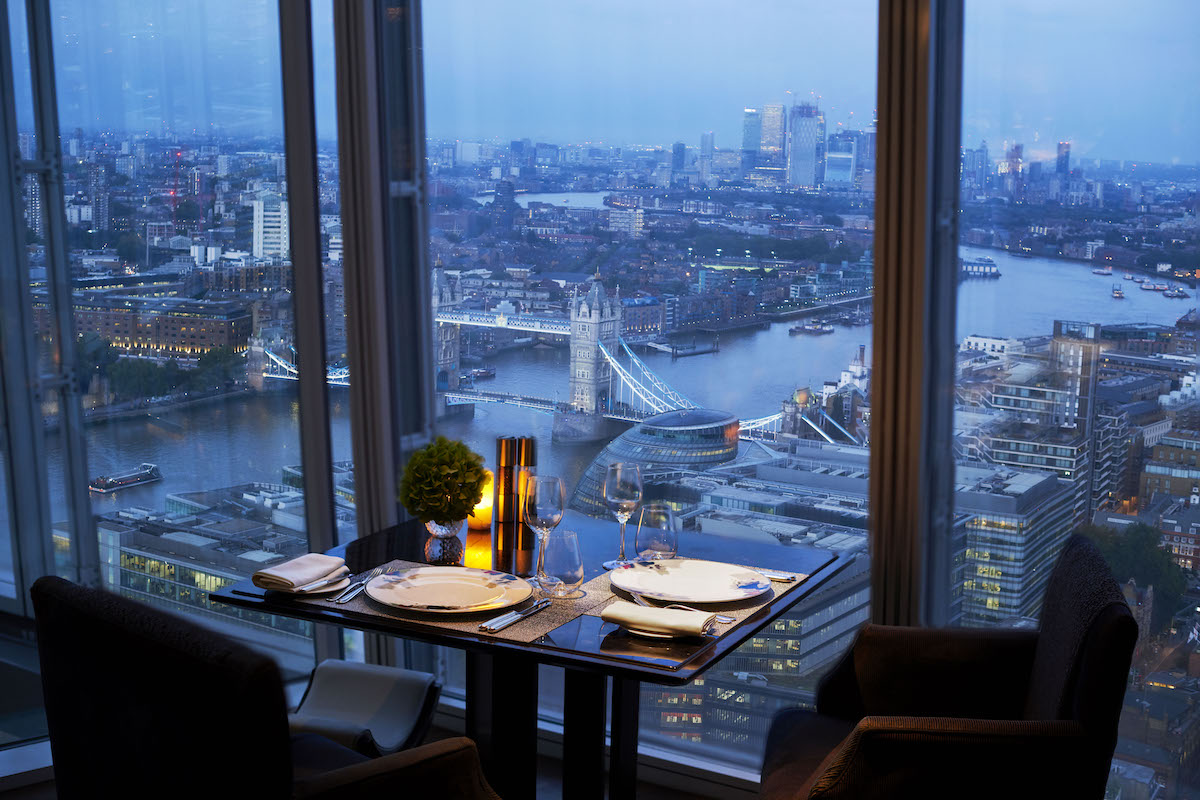This website uses cookies so that we can provide you with the best user experience possible. Cookie information is stored in your browser and performs functions such as recognising you when you return to our website and helping our team to understand which sections of the website you find most interesting and useful.
Comfort among the clouds at Shangri-La The Shard
By Tempus | 9 November 2021 | Travel
Can a hotel stay be calming and exhilarating at the same time? Tempus discovers the answer at London’s most sought-after establishment
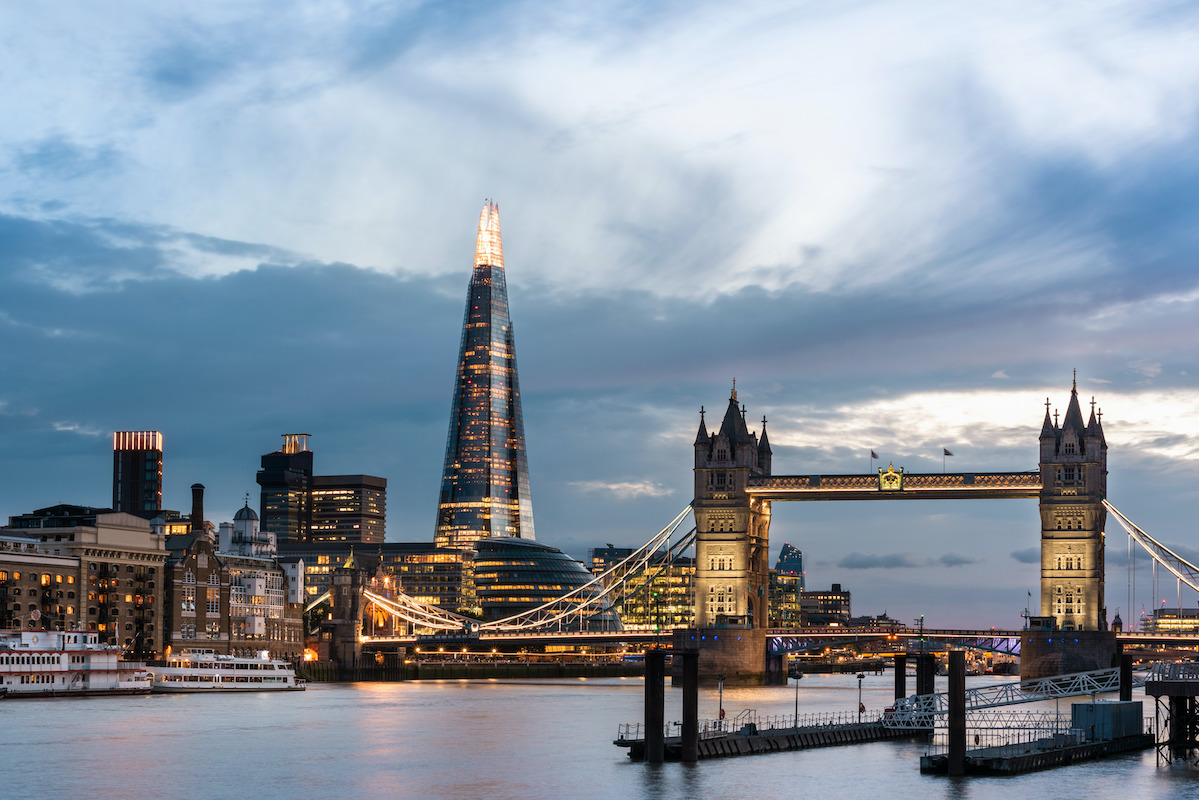
As Europeans, we are rarely – if ever – given the opportunity to check into a hotel in which our first experience feels somewhat like lifting off in one of Jeff Bezos’ uniquely shaped spacecrafts. Where “please ascend to the lobby on the 35th floor” may not sound out of the ordinary in a city like Taipei, Singapore or Hong Kong, our old continent and its dastardly height restrictions have left many a luxury hotel enthusiast solemnly gazing at the sky and wondering: “What if?”
But if you’ve visited London, you will have noticed that it’s rather difficult to miss The Shard. At just over 1,000ft, it is by far the tallest building in the UK (and was all-too-briefly the tallest in the EU), towering above the River Thames since its completion in 2011 and becoming a soaring, angular icon perched atop the capital’s cluttered, low-altitude skyline. And within this jagged behemoth lies one of London’s hottest hideaways – a hotel in a location so sought-after that people will queue around the block simply to enter the building which houses it; Shangri-La The Shard.
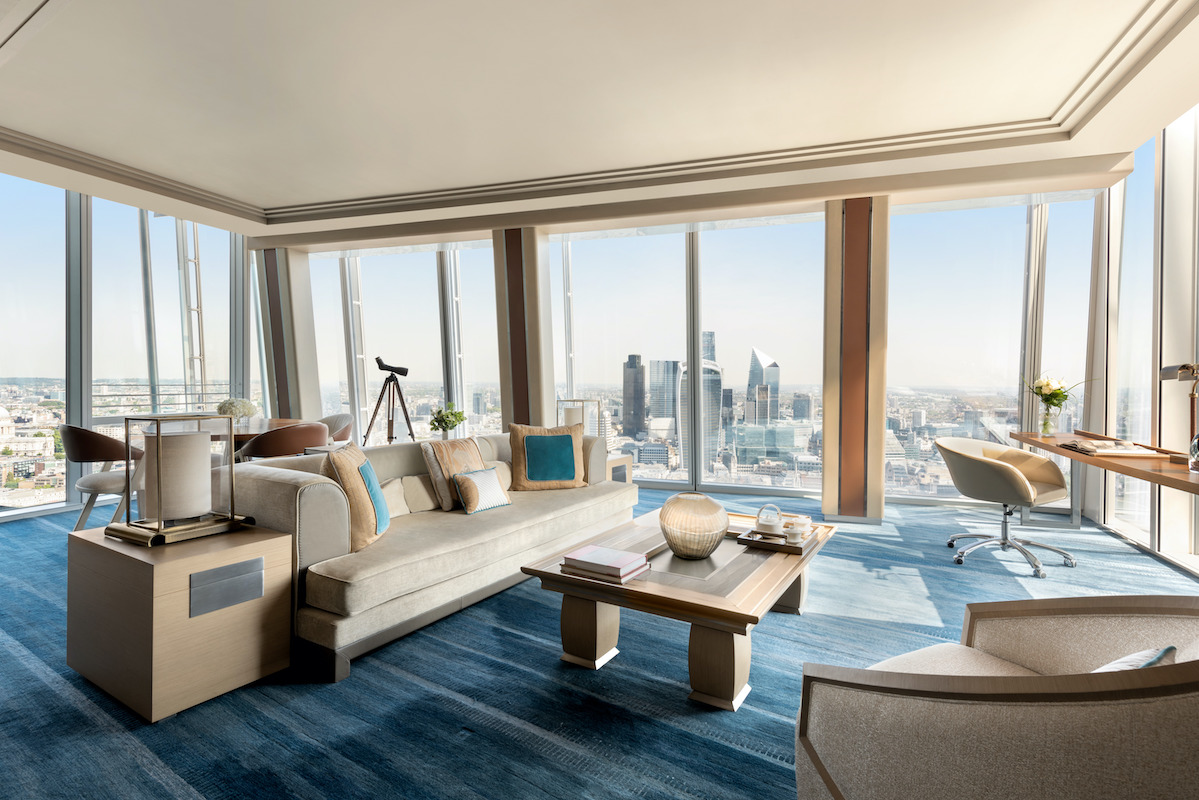
Entering the impressively airy all-glass atrium on the ground floor, my companion and I were directed toward the lifts out of sight beyond the concierge desk. The ride up is an ear-popping, dizzying experience, with numbers whizzing by on a screen adding to the apprehensive drama that builds as you approach your destination floor, which in our case was the 35th floor lobby. In a move of visual panache, the hotel has designed its lifts to open directly out onto floor-to-ceiling panoramic windows, with views stretching tens of miles to the west over some of the capital’s most famous landmarks, from Waterloo Bridge and the London Eye to the Houses of Parliament and Battersea Power Station. It is quite honestly one of the most spectacular introductions to a hotel any guest could hope to experience.
Here, high above the city – and occasionally above the clouds on days less intensely sunny than the one we arrived on – I had expected an overall atmosphere of calm, as if floating among the birds and being thoroughly detached from the manic hive of activity around London Bridge below. But the lobby, while dripping with class with its shimmering tile floors and sun-brushed wooden walls, is far from tranquil. It is a space bursting with life and excitement, awash with every demographic, from dapper businessmen preparing for meetings to flirtatious young couples taking selfies for Instagram. And I suppose it is this cross-societal appeal that makes the Shangri-La so in-demand; no matter one’s age, nor how much wealth they’ve accrued, everyone wants to sleep in the glass castle in the sky.
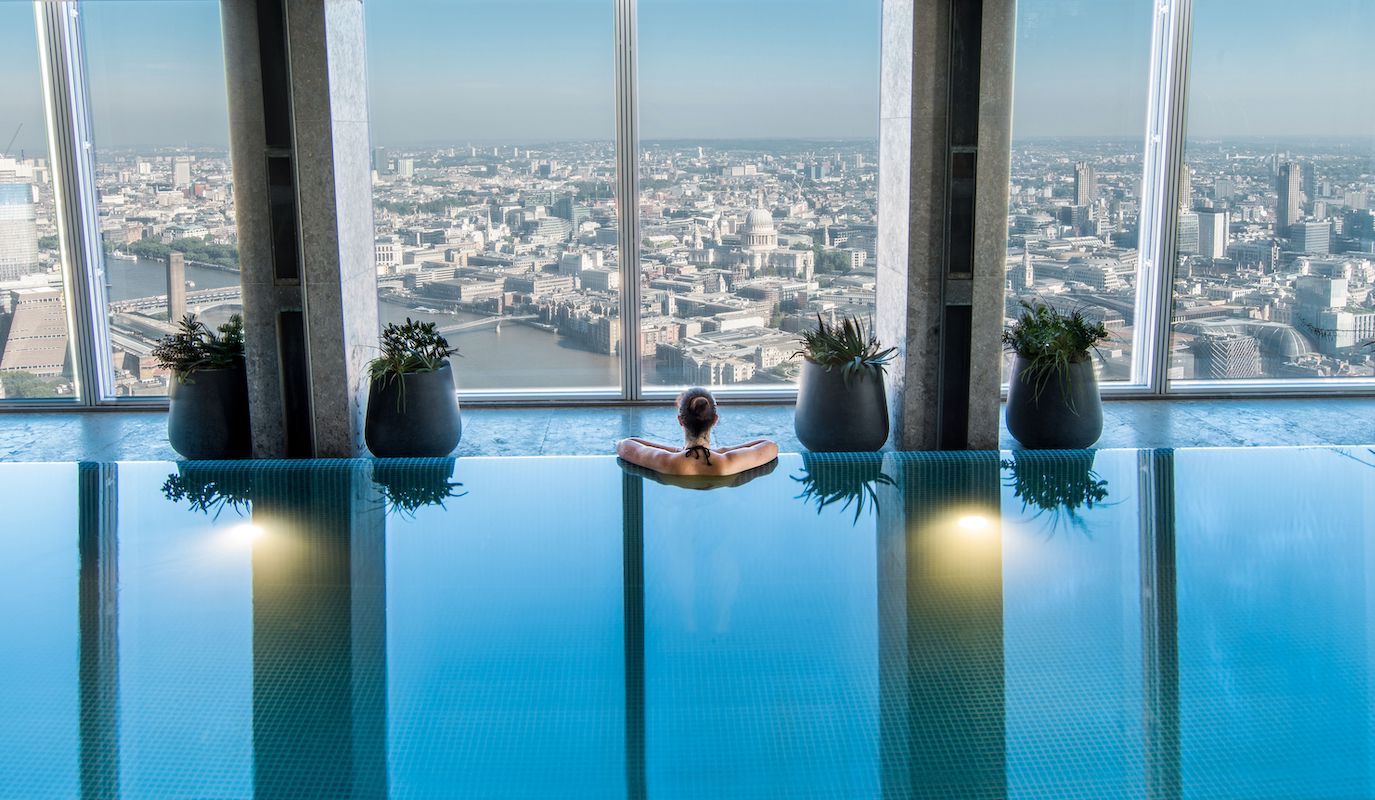
But 15 floors further up, our room is a completely different experience altogether. Though aesthetically it retains the same sleek, ultra-contemporary trimmings as the communal areas, it is deathly silent, as dictated by the exceptionally thick glass used for the windows, which take up more than half of our suite’s wall space. We climbed onto our rather tall beds and kicked up our feet, spending a good half hour simply admiring the stunning view that would be a mainstay of our time here.
With our room facing east, we were treated to an unusual perspective on the city, with Tower Bridge sitting immediately below while Canary Wharf, London City Airport and the Thames Barrier punctuated the vista of increasingly suburban residential areas stretching out into Kent and Essex. But while so-called “City Rooms” – i.e. those facing west toward the centre of London – go for a higher premium than those like ours, this ended up revealing itself as a blessing in disguise as the sun set, dipping behind the building and casting a spectacular triangular shadow for miles to the east. Sharing a bottle of champagne as the buildings below became bathed in gorgeous oranges, pinks and purples, we perched on the edge of our beds and whiled away hours pointing out landmarks we recognised. There’s Peckham; there’s Crystal Palace Park; there’s the London Stadium.
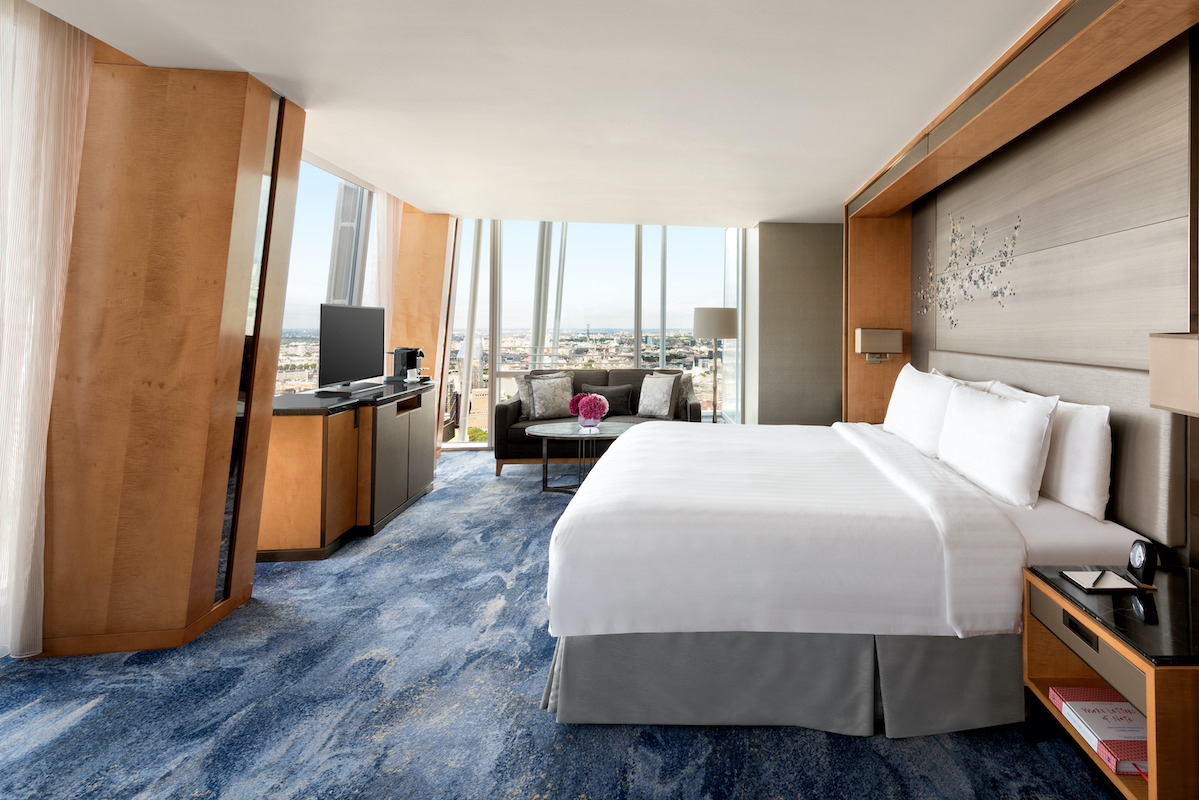
And before we knew it we found ourselves back down on the 35th floor with a windowside table at TING, Shangri-La’s stunning modern Asian fusion restaurant with spectacular views to the north. Before we could place a food order, a sartorially elegant sommelier sidled up to our table and presented us with an extensive wine list, and after a brief discussion, reeling off a list of those that might fit my palate. We were nudged toward a rather unusual specimen – a syrah from New Zealand – which was crisp and dry yet robust with strong red fruit notes.
The food, when it arrived, was equal parts surprising and sumptuous. The restaurant describes itself as the embodiment of “East meets West”, which on our table was represented by a starter of delicate beef tataki with preserved vegetables, seaweed, shiso, while my main was a Rhug Estate pork belly with baby pak choi, lotus root and crackling. My companion and I also opted for the Malaysian fried rice – a more orthodox staple of southeast Asian cuisine – before ending on a thick, indulgent chocolate and banana tart with grue de cacao ice cream. After a quick pint at a nearby pub, still dressed in the smart casual clothing we had worn to TING, we ascended into the heavens to return to our room.
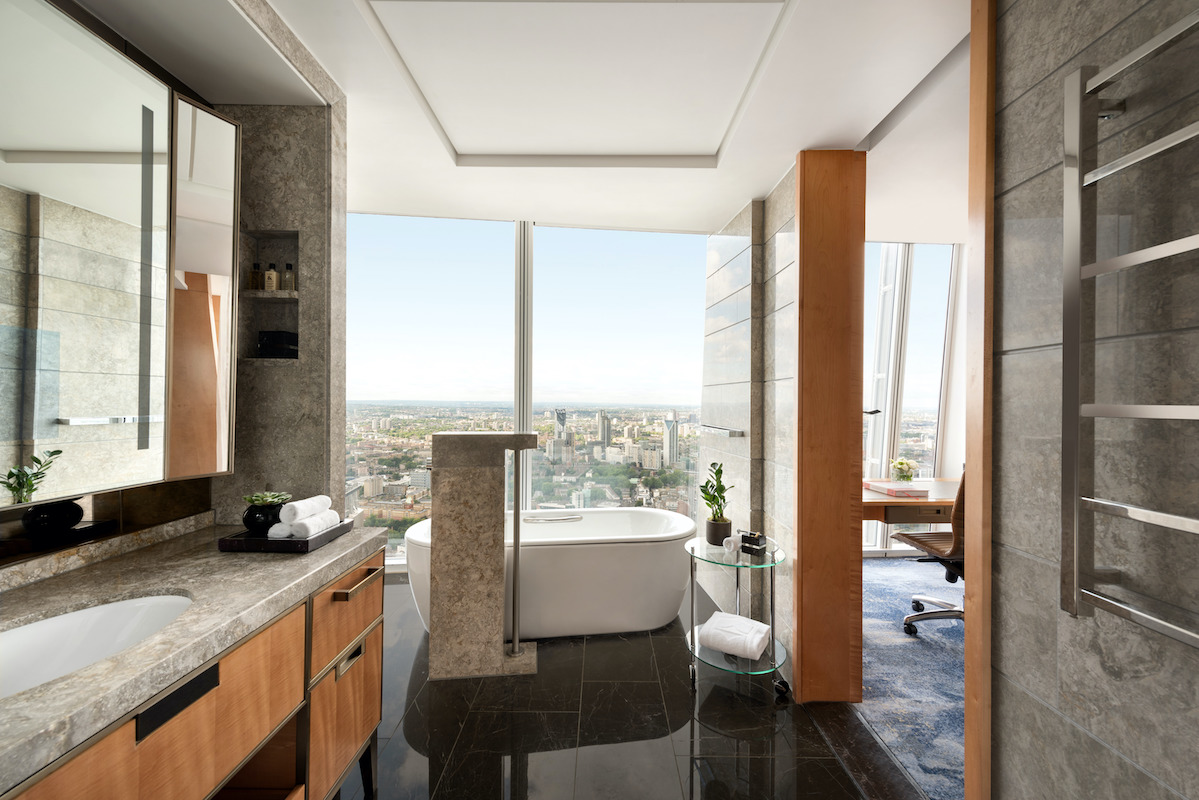
Come morning, our room’s eastward-facing attributes came as something of a mixed bag. For those looking to kickstart a day of sightseeing or business with a bang, opening the gargantuan automated blackout blinds to come face to face with the August sun at 5am is probably somewhat invigorating, and one might be tempted to simply sit with a cup of Nespresso on one of the tasteful armchairs in the corner and watch the city slowly wake up from its semi-slumber. But for two guys who had been wined and dined in the restaurant before heading out for a few pints at the numerous first-class drinking holes around the area, it was a somewhat more intense wakeup than we had envisaged, kicking off a rather intense greenhouse effect that had me scrambling for the climate control to counteract the rising heat in the room.
We trundled back down, bleary-eyed, to TING, where breakfast awaited us along with a view that had remained as thoroughly remarkable and breathtaking as the first time I saw it. On a corner table bathed in bright, warm sunshine, we sat and sipped at our flat whites and downed as much water as we could before facing the dreaded realisation that we would soon have to descend to the world below and return to our normal lives. Up here, London had felt like a different city; an art piece covering all four walls, and one that in effect inverts the usual aim of a hotel. In any other luxury accommodation, privacy is paramount, and the idea of flinging your blinds open and having half of your room be a transparent portal into your living quarters feels unfamiliar and even creepy. Here, however, far above the level at which those on the ground can see you go about your mornings or evenings, the view is the whole show, adding an element of exhilaration to an already luxury setting.
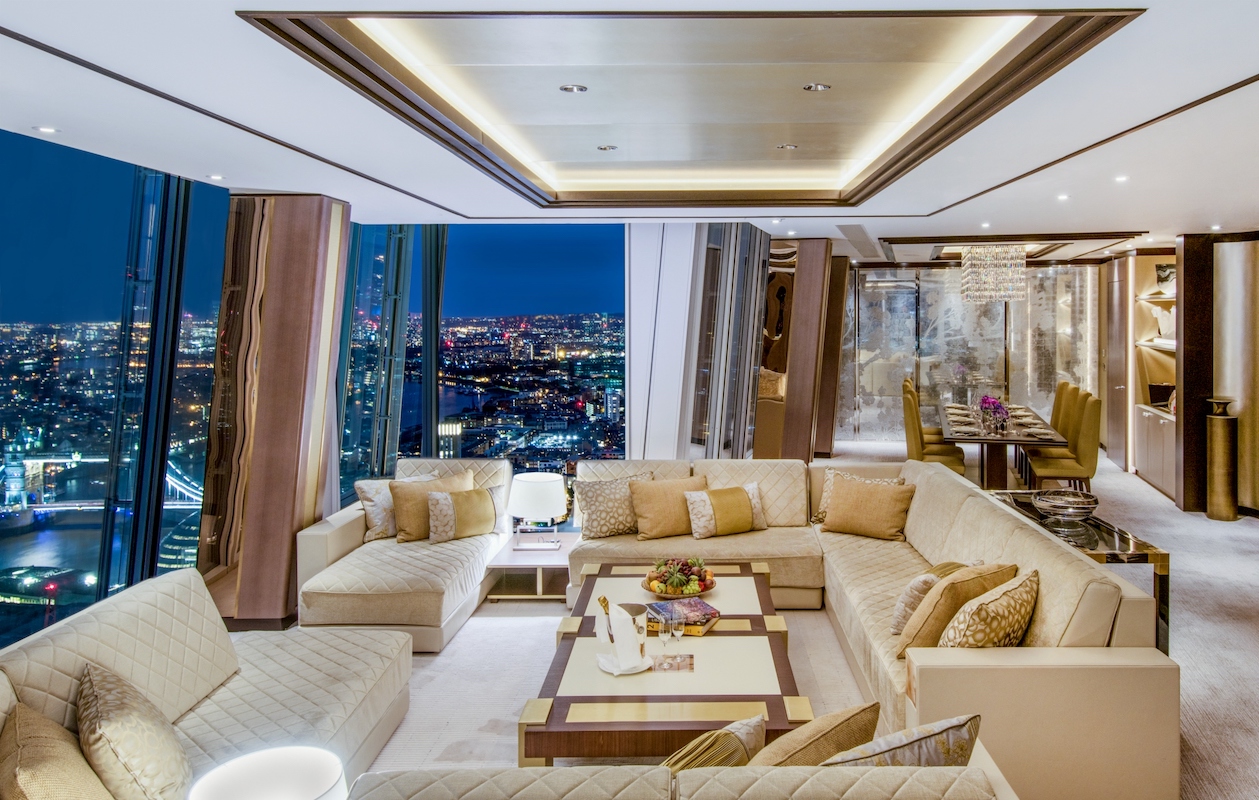
I stepped out onto the London Bridge station concourse, 50 floors below, and looked up wistfully, knowing I had experienced something special. In all my years of hotel reviewing, I have been at least partly happy to be heading back to the comfort of my own bed. At The Shard, I wanted to stay floating, hundreds of feet above my troubles, forever.
